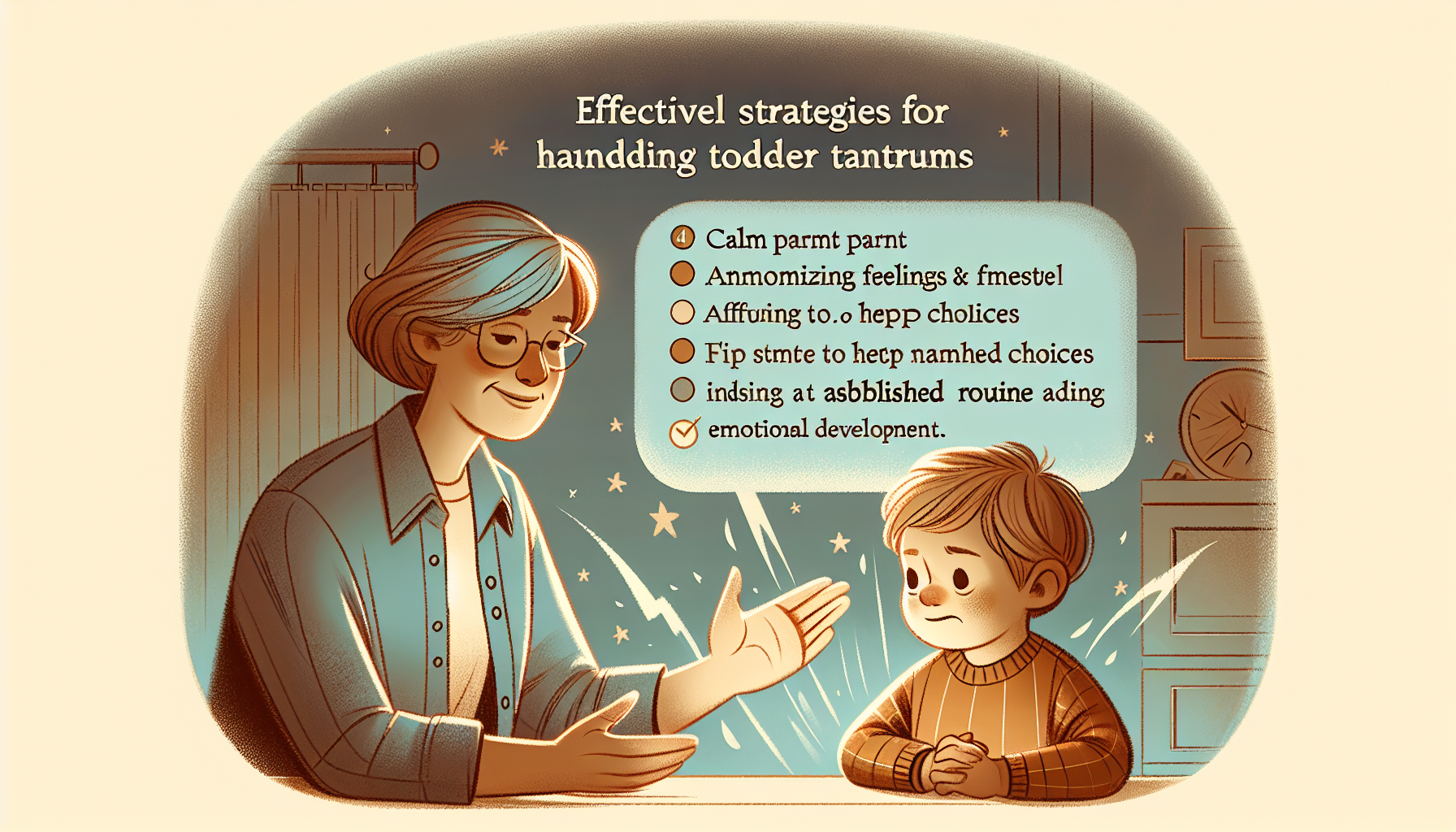“`html
How to Handle Tantrums in Toddlers
As a parent, one of the most challenging and, at times, overwhelming experiences is navigating toddler tantrums. These emotional outbursts can leave you feeling frustrated, confused, and unsure of how to respond. However, understanding the root causes of tantrums and learning effective strategies to handle them can transform these moments into opportunities for growth and connection with your child.
Why Do Toddlers Have Tantrums?
Toddler tantrums are a normal part of child development. They often occur because toddlers are still developing the skills to regulate their emotions and communicate their needs effectively. Here are some common reasons why tantrums happen:
- Frustration: Toddlers often feel frustrated when they cannot achieve a task or express themselves. Their limited vocabulary and underdeveloped problem-solving skills can lead to emotional outbursts.
- Hunger, Fatigue, or Overstimulation: Physical discomfort, such as hunger or being overtired, can significantly contribute to tantrum behavior. Similarly, being in a noisy or overwhelming environment can trigger a meltdown.
- Desire for Autonomy: Toddlers are learning to assert their independence, which can lead to power struggles when they are told “no” or when their desires conflict with parental boundaries.
- Need for Attention: Sometimes, tantrums occur because toddlers crave attention from their caregivers, even if it’s negative attention.
Understanding these triggers is the first step toward effectively handling tantrums in toddlers. By addressing the underlying cause of the tantrum, parents can respond more compassionately and constructively.
How to Respond to Toddler Tantrums
When faced with a tantrum, it’s important to remain calm and avoid reacting with anger or frustration. Here are some proven strategies to help you manage your child’s outburst:
1. Stay Calm and Regulate Your Own Emotions
Your reaction sets the tone for how the situation will unfold. If you become upset or raise your voice, it can escalate the tantrum. Instead, take a deep breath, maintain a calm tone, and remind yourself that tantrums are a normal part of toddler behavior.
2. Acknowledge Their Feelings
Validating your child’s emotions can help them feel understood and supported. For example, you can say, “I see that you’re upset because you wanted to play longer.” This approach aligns with principles of cognitive-behavioral therapy (CBT), which emphasize identifying and addressing emotional needs.
3. Set Clear and Consistent Boundaries
While it’s important to empathize with your child, it’s equally crucial to maintain boundaries. For instance, if your child is upset because they can’t have candy before dinner, calmly explain, “I know you really want candy, but we need to eat dinner first.” Consistency helps toddlers understand and adapt to expectations over time.
4. Offer Choices to Foster Autonomy
Giving your child choices can help them feel a sense of control, reducing power struggles. For example, instead of saying, “Put on your shoes now,” try, “Would you like to wear your red shoes or your blue shoes?” This strategy taps into their need for autonomy while guiding them toward the desired behavior.
5. Use Distraction and Redirection
Sometimes, the best way to diffuse a tantrum is to shift your child’s focus to something else. For example, if they’re upset about leaving the park, you can say, “Let’s go home and read your favorite book together.” Distraction can be a powerful tool for de-escalating intense emotions.
6. Teach Emotional Regulation Skills
Over time, help your child develop the ability to manage their emotions. Encourage them to express their feelings with words, such as “I’m sad” or “I’m frustrated.” You can also teach calming techniques like taking deep breaths or counting to five.
7. Praise Positive Behavior
Reinforce good behavior by offering praise when your child handles a situation well. For instance, if they calmly put away their toys after being asked, acknowledge their effort by saying, “Great job cleaning up! I’m proud of you.” Positive reinforcement encourages more cooperative behavior in the future.
Practical Tips for Preventing Tantrums
While it’s impossible to eliminate tantrums entirely, there are proactive steps you can take to minimize their frequency and intensity:
- Establish Routines: Toddlers thrive on predictability. Having a consistent daily schedule for meals, naps, and playtime can reduce uncertainty and anxiety.
- Meet Basic Needs: Ensure your child is well-rested, well-fed, and comfortable. Addressing these basic needs can prevent many tantrum triggers.
- Prepare for Transitions: Give your child a heads-up before transitioning from one activity to another. For example, say, “In five minutes, we’re going to leave the park and head home.”
- Limit Frustrating Situations: If you know your child struggles with certain tasks, offer assistance or create an environment where they can succeed with minimal frustration.
- Encourage Play and Self-Expression: Provide opportunities for your child to explore their emotions through play, drawing, or storytelling.
When to Seek Professional Help
While most tantrums are a normal part of development, there are instances where professional guidance may be necessary. Consider seeking help from a child psychologist or therapist if:
- Tantrums are excessively frequent or intense.
- Your child harms themselves or others during a tantrum.
- Tantrums persist beyond the toddler years and interfere with daily life.
A professional can help you develop tailored strategies to address your child’s unique needs and challenges. You can learn more about identifying when to seek help here.
Conclusion
Handling toddler tantrums can be a daunting aspect of parenting, but with the right tools and mindset, it’s possible to navigate these moments with patience and empathy. By understanding the causes of tantrums, responding calmly, and teaching your child emotional regulation skills, you can strengthen your bond and foster their development.
Remember, tantrums are a temporary phase that offers valuable opportunities to nurture your child’s emotional growth. With consistent effort and compassionate parenting, you can guide your toddler through this stage and lay the foundation for a healthy, trusting relationship.
For more parenting tips and resources, explore our website and discover how to support your child’s journey every step of the way.
“`

